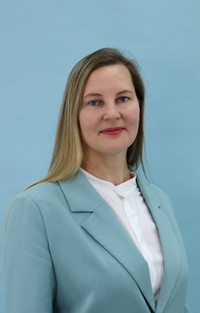Вам может быть интересно:
Архив журнала
Инновационный подход к разработке технологии обследования детей с тяжелыми множественными нарушениями развития
- 1008
- Файл статьи: PDF
Аннотация: Статья посвящена проблеме изучения особых образовательных потребностей детей с тяжелыми множественными нарушениями развития. Актуальность проблемы обусловлена увеличением количества детей с комплексным дефектом в образовательных учреждениях, а также дефицитом научно обоснованных технологий изучения особых образовательных потребностей детей данной категории для разработки специальных индивидуальных программ развития. Дети с тяжелыми множественными нарушениями развития представляют собой достаточно разнообразную группу по своим речевым, интеллектуальным, эмоциональным, двигательным, сенсорным возможностям. В статье показано, что Федеральный государственный стандарт начального общего образования обучающихся с ОВЗ впервые на уровне нормативно-правового регулирования утвердил право на образование детей с тяжелыми множественными нарушениями развития. Для исследования образовательных потребностей детей с сложными нарушениями была разработана методика обследования, которая включает следующие блоки: исследование эмоционального реагирования, исследование зрительного восприятия, исследование слухового восприятия, исследование тактильной чувствительности, восприятия пространственных отношений, двигательного развития (мелкой и крупной моторики), познавательного развития, а также общая характеристика деятельности (мотивация, понимание инструкции, характер деятельности, темп и динамика, работоспособность, обучаемость). Описаны результаты исследования детей 7—11 лет с различными сочетаниями нарушений (детский церебральный паралич с нарушениями слуха или зрения, интеллектуальной недостаточностью, эпилепсией), среди которых были выделены три группы детей с различной структурой проявления психических процессов по данной методике.
Ключевые слова: тяжелые множественные нарушения развития; индивидуальная программа развития; ТМНР; дети с тяжелыми множественными нарушениями развития; особые образовательные потребности; младшие школьники; ФГОС; Федеральные государственные образовательные стандарты; технологии обследования.
Abstract: The article deals with the question of studying special educational needs of children with severe multiple developmental disorders. The urgency of the problem can be attributed to the increasing number of children with mul-tiple disorders in education institutions, as well as to the lack of scientifically substantiated technologies for studying special educational needs of the children of this category to develop special indi-vidual developmental programs. Children with severe multiple developmental disorders represent a rather diverse group in terms of their speech, intellectual, emotional, motor, and sensory abilities. The article shows that the Federal State Educational Standard of primary general education for students with disabilities for the first time in history affirmed the right to education of children with severe multiple developmental disorders at the level of normative legal regulation. In order to investigate the educational needs of children with multiple disorders, an examination technique was developed which included the following blocks: observation of emotional response, study of visual perception, investigation of auditory perception, assessment of tactile sensitivity, perception of spatial relations, motor development (fine and gross motor skills), and cognitive development, as well as provision of general characteris-tics of activity (motivation, understanding of instructions, nature of activity, tempo and dynamics, work capacity and teacheability). The article describes the results of the examination of children
7-11 years old with various combinations of disorders (cerebral palsy with hearing or visual impairment, intellectual disability, epilepsy) among which three groups of children with a different structure of manifestation of mental processes were singled out using this technology.
Key words: severe multiple developmental disorders; individual program of development; children with severe multiple developmental disorders; special educational needs; junior schoolchildren; FSES; Federal State Educational Standards; examination technologies.


